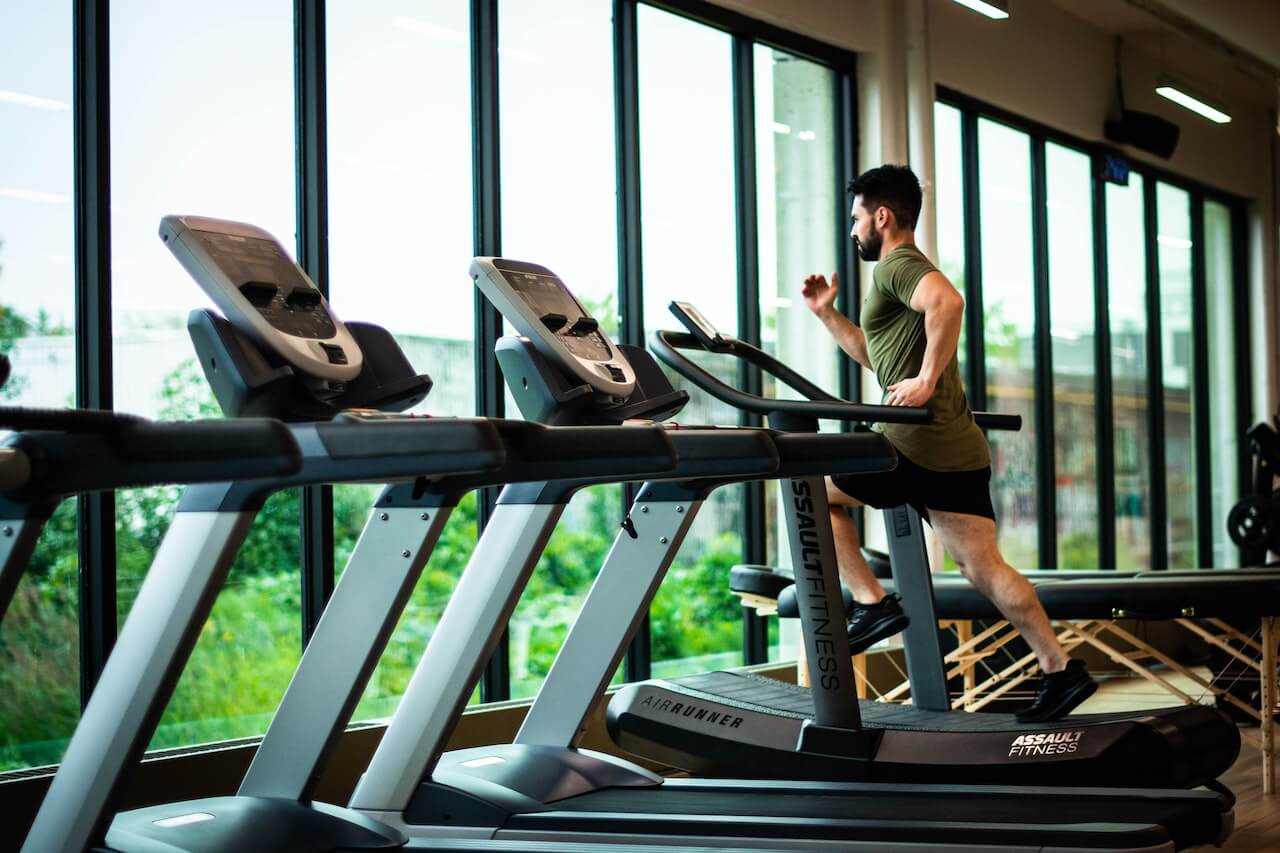Dryland in swimming might sound like a contradiction, but it’s actually a crucial component of a well-rounded training routine. As a swimmer, you’re no stranger to spending hours in the pool perfecting your technique and building endurance. However, doing some training on dry land (i.e. outside of the water) can improve your swimming performance and reduce your risk of injury.
You may be wondering what exactly dryland training entails. Generally, it consists of land exercises and activities that target and strengthen muscles used in swimming. This type of training can range from simple stretching exercises to more advanced workouts involving weights or resistance bands.
By integrating dryland exercises into your routine, you’ll not only see improvements in your overall physical mobility but also gain a competitive edge during your swim meets. Keep reading on to learn how you can do dryland training to be a better swimmer.
What Is Dryland Training?

Dryland training, also known as strength and conditioning, is an essential part of a swimmer’s routine that focuses on exercises performed outside of the pool. This type of training aims to improve your overall physical mobility, strength, and flexibility, ultimately enhancing your swimming performance.
Your dryland workouts may include various exercises, such as those done in a weight room or around the pool deck. You might also engage in cardio activities like running stadiums or biking to build endurance out of the water. It is important to select exercises that target swimming-specific muscles and complement your in-pool training (we’ll give you some sample workouts below).
Some benefits of regular dryland training include increased range of motion and flexibility, which can help you develop better stroke technique and prevent injury. Furthermore, these workouts can assist in correcting muscle imbalances caused by overuse or improper technique.
In the next section, we’ll go over the various benefits of dryland training for swimming.
Benefits of Dryland Training for Swimming

As a swimmer, incorporating dryland training into your routine can significantly enhance your overall performance. One of the main benefits of dryland training is the development of muscle and bone density. Swimming alone makes it difficult to build muscles and that’s where supplementary training such as weight lifting comes in handy.
Core strength is another essential aspect influenced by dryland training. Having a strong core enables you to maintain proper alignment and posture when swimming. This improved posture increases your efficiency, allowing you to swim faster and for longer periods.
Dryland training also plays a crucial role in injury prevention. By correcting muscular imbalances and enhancing flexibility, you reduce the risk of injuries related to poor technique or overuse. A well-rounded dryland program helps to protect your joints and muscles, keeping you healthy and able to perform at your best.
Another advantage of dryland training is its ability to correct biomechanics. By focusing on exercises that mirror the movements in your swimming strokes, your form and technique will be enhanced, resulting in more effective and powerful swims.
Last but not least, dryland training fosters enhanced power in your swimming. The development of explosive strength through exercises such as resistance training, plyometrics, and functional movements, can lead to better starts, stronger push-offs and increased speed in the pool.
Key Components of Dryland Training

Strength and Conditioning
One major aspect of dryland training is focusing on strength and conditioning exercises. These activities, performed outside the pool, help swimmers build muscle, increase power, and improve overall performance.
Depending on your fitness level, you can incorporate different exercises such as weightlifting, resistance band workouts, or bodyweight exercises like push-ups and squats.
Flexibility and Mobility
Another crucial component to dryland training is enhancing your flexibility and mobility. A greater range of motion in your joints will enable better stroke techniques and overall performance in the water. Incorporate stretching exercises, yoga, or other activities designed to promote mobility in your dryland routine. Here are a few examples:
- Hamstring stretches
- Shoulder stretches
- Dynamic stretches for warm-up
Injury Prevention
Dryland training isn’t only about improving performance; it’s also about keeping you safe and healthy. By focusing on injury prevention, you can maintain a consistent and productive swim routine. Perform exercises that target muscles essential to swimming, and avoid overloading a specific muscle group to prevent imbalances.
As you progress in your dryland training, don’t forget to track your improvements and adjust your program accordingly. This will help ensure you continue to reap the benefits of dryland training while preventing injuries, all setting you up for success in the pool.
Best Dryland Exercises for Swimmers
Dryland training is essential for improving your swimming performance, as it helps develop strength, flexibility, and endurance outside the pool. Here are some of the best exercises you can incorporate into your routine.
Burpees: This full-body exercise is excellent for building strength and aerobic capacity. Perform 10 burpees per set, with a total of 5 sets and 30-60 seconds rest between each set. As you master this move, you’ll notice improvements in your swimming stamina and power.
Alternating Jump Lunges: Great for leg strength and explosive power, this exercise is perfect for improving your starts and turns. Aim for 10 alternating jump lunges per set, with 5 sets and adequate rest in between.
Squats: Squats target your lower body and help with your push-off during flip-turns. Incorporate this swim-specific exercise into your routine, focusing on proper form.
Leg Lifts: Leg lifts target your core, which is crucial for maintaining proper body position in the water. Perform 10 leg lifts per set, aiming for 5 sets with a brief rest between each.
Plank Progressions: Strengthening your core can lead to better swimming technique and injury prevention. Incorporate plank progressions into your dryland workouts, holding each position for a challenging but manageable duration.
Remember, consistency is key when it comes to dryland training. Stick to your workout routine, and you’ll soon see improvements in your swimming performance.
How to Incorporate Dryland in Your Training Routine
To seamlessly integrate dryland exercises into your routine, follow these simple steps:
Firstly, treat dryland training as a part of your overall swimming plan. By incorporating it into your weekly schedule, you’ll be able to complement your in-water workouts effectively. A well-balanced plan may involve dryland exercises 2-3 times per week, depending on your goals and available time.
Next, choose exercises that target the muscles you use during swimming. In many cases, utilizing weights, medicine balls, or stretch cords will help you achieve the desired results. However, simple bodyweight exercises, such as push-ups and lunges, shouldn’t be underestimated.
- Core stability – plank, Russian twist
- Upper body strength – push-ups, pull-ups
- Lower body power – jump squats, lunges
- Flexibility – dynamic stretching, yoga poses
When planning your routine, consider adding some variety to your workouts to keep them engaging and to minimize the risk of plateaus. For instance, you can take part in a dryland workout plan that includes alternating exercises or repeating a set of exercises multiple times with short rests in between.
Don’t just do the same exercises at the same intensity each time! You need progression, and to do that you need to challenge yourself; gradually increase the intensity, weight, or number of repetitions as you become stronger and more proficient in the exercises. This is known as progressive overload and it is a key concept in strength training.
To achieve lasting results and successfully improve your swimming skills, make sure to stay consistent in your dryland practice.
Remember, when done right, dryland training will become an invaluable tool in boosting your swimming performance and overall fitness level. So, give it a try and witness the positive impact it will have on your time in the water!
Tips for Effective Dryland Training
Dryland training is crucial for improving your overall swimming performance. Here are some tips to make the most of your dryland workouts.
Maintain a consistent routine: To see the best results, it’s important to incorporate dryland training into your regular schedule. Aim to do dryland exercises at least two to three times per week, giving your muscles time to recover between sessions.
Focus on core strength: A strong core is essential for powerful swimming strokes. Incorporate exercises such as sit-ups, Russian Twists, and dead bugs into your routine to develop a solid foundation for your swimming technique.
Choose exercises that target swimming muscles: Make sure to include exercises that specifically target the muscle groups used in swimming, such as push-ups, planks, and burpees. This will help improve your strength in the water and reduce the risk of injury.
Use resistance bands: Resistance bands are great tools for simulating swimming movements on dry land. They can help you work on your stroke technique while simultaneously building strength in the necessary muscles. Stretch cords are a popular option among swimmers for this purpose.
Listen to your body: Don’t push yourself too hard right away. Start with lighter weights and fewer repetitions, gradually building up as your strength increases. If you experience pain or discomfort, take a break or adjust the exercise to avoid injury.
Combine strength and flexibility exercises: Balance your workout routine with a mix of strength-building and flexibility-enhancing exercises. This will help prevent muscle imbalances that can lead to poor stroke technique or overuse injuries. Focus on your range of motion and incorporate stretching exercises to improve your performance in the water.
Conclusion
In this article, we’ve delved into the world of dryland training in swimming and discovered its importance in enhancing your swimming performance. As a swimmer, incorporating dryland exercises into your routine can help improve your power, athleticism, and speed in the pool.
From building muscle and bone density to boosting your overall swimming prowess, dryland training truly offers a multitude of benefits. Plyometrics, for instance, are a significant component of these exercises that can increase your speed and strength.
As you continue your journey in this aquatic sport, take advantage of dryland training to elevate your skillset and performance. Remember, consistency is key, so maintain a mix of dryland workouts alongside your regular pool sessions. By embracing these techniques, you’ll certainly set yourself on the path of achieving your swimming goals. And don’t forget – always listen to your body and train smart!
Sources:
- https://www.usms.org/fitness-and-training/articles-and-videos/articles/drylands-for-swimmers?Oldid=1936
- https://blog.myswimpro.com/2018/10/04/dryland-exercises-for-swimmers/
- https://www.eatsleepswimcoach.com/dryland-training/
- https://swimmirror.com/blog/dryland-training-is-a-must/
- https://swimswam.com/dryland-training-program-5-keys-to-success-with-surge-strength/


